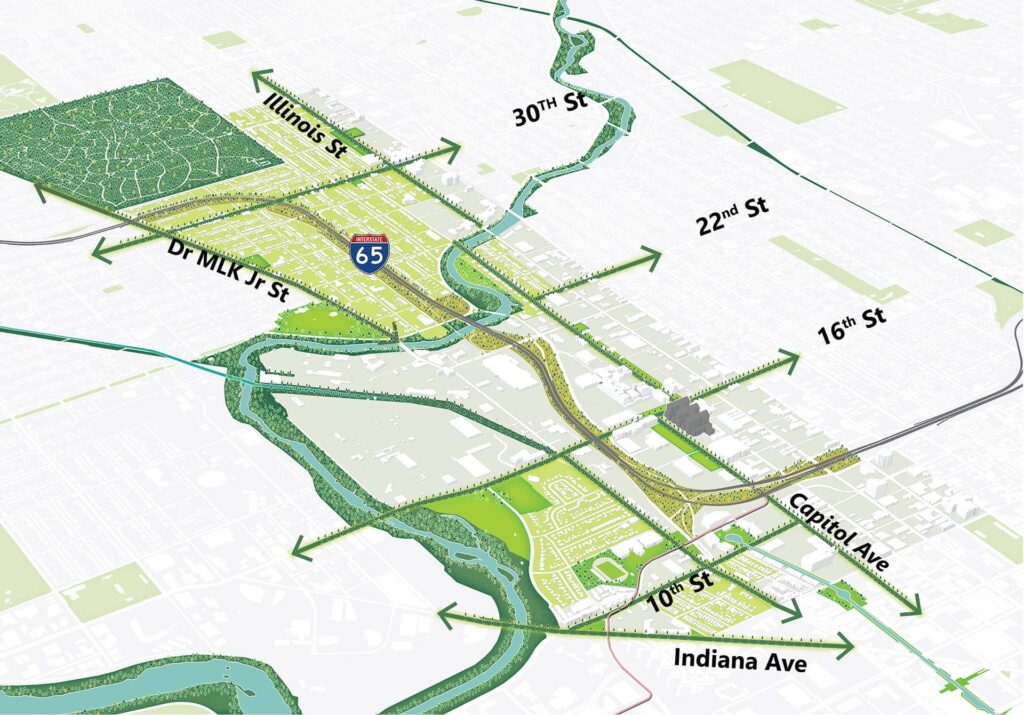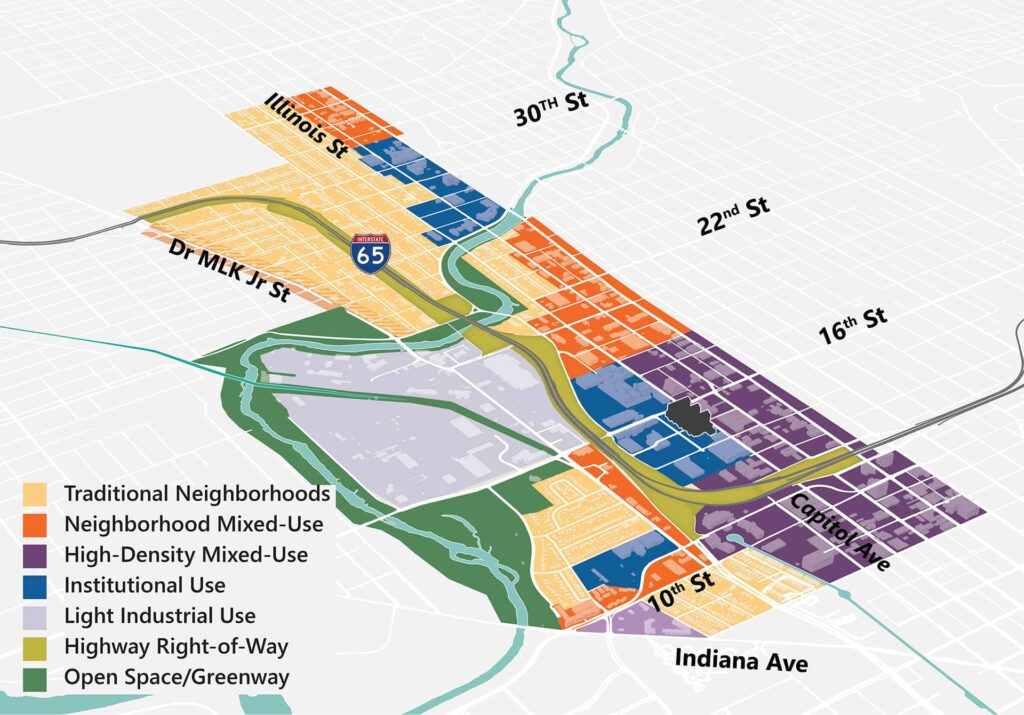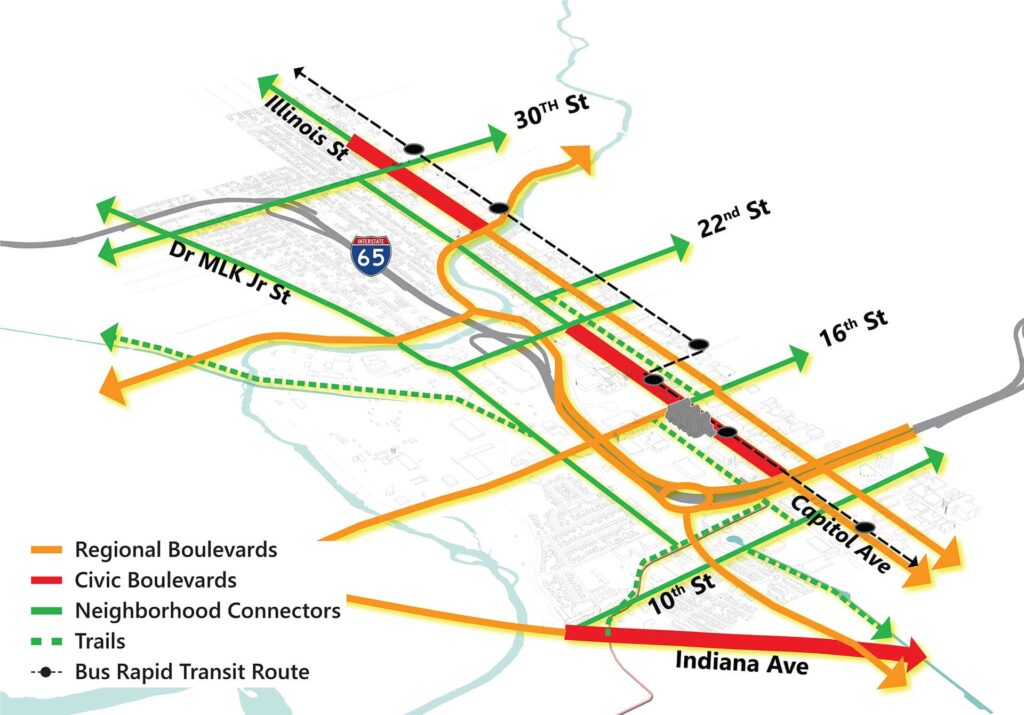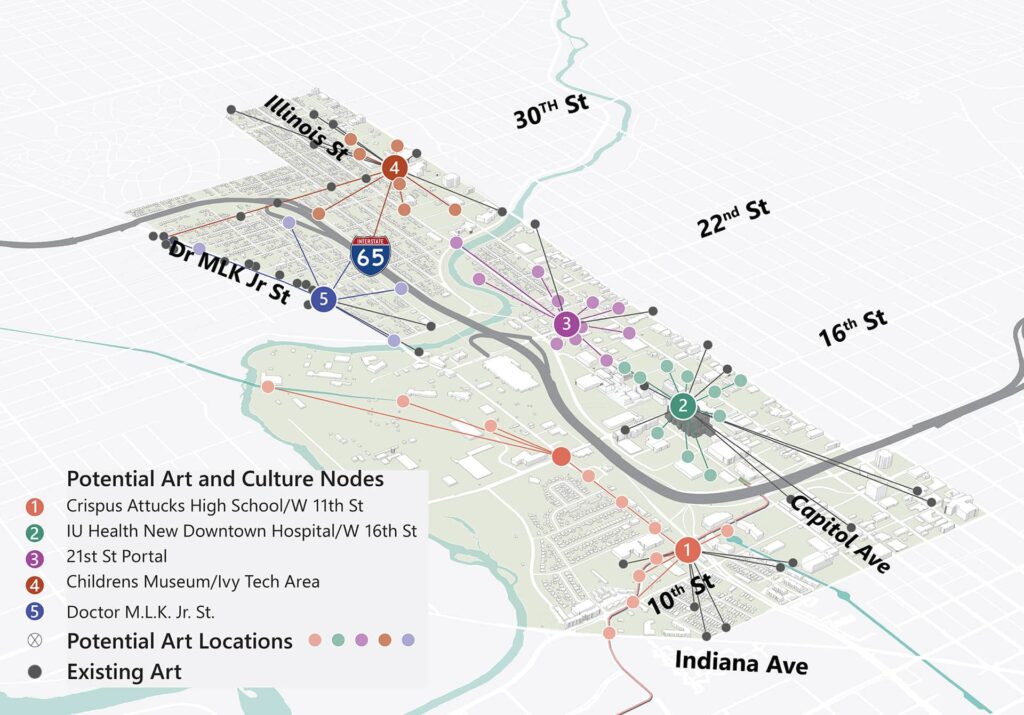ABOUT US
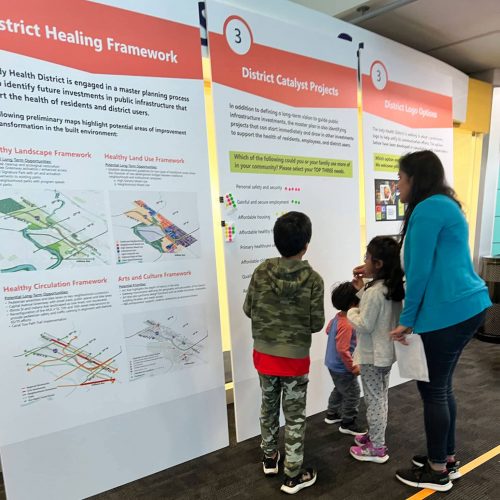
What is the Indy Health District?
The Indy Health District is a recently established nonprofit dedicated to reducing health inequity across Indianapolis. Stretching from the north end of downtown up to Crown Hill Cemetery, the 1,500-acre district includes major institutional campuses, historic neighborhoods and several commercial and industrial zones.
The Indy Health District is a collaborative effort between several anchor institutions, including IU Health, The Children’s Museum of Indianapolis, Citizens Energy Group and Ivy Tech Community College and the neighborhoods located in and around the district, including Crown Hill, Historic Flanner House Homes, Highland Vicinity, Meridian Highland and Ransom Place.
Guiding Principles
The Indy Health District is built around six guiding principles. Measured together, these principles will ensure the district addresses all factors necessary to meaningfully improve quality of life for the individuals who work and reside within it. All guiding principles were established based on input from district residents, businesses, governmental institutions and community organizations.
Provide equitable socioeconomic impact to the surrounding neighborhoods and downtown Indianapolis.
Create a dense, walkable community with smart land use, transportation options, employment opportunities, diverse housing and amenities.
Foster a healthy lifestyle for people in the district by enabling healthy behaviors and demonstrating the importance of place on community health.
Establish physical and programmatic connections between the local community, the new IU Health downtown Indianapolis hospital campus, employee workplaces, 16 Tech and area universities.
Ensure community access to high-quality medical care and health care amenities within the district.
Provide health care, education and research that benefits the community, resulting in a higher quality of life and greater life expectancy.
Community-centric Infrastructure
From edge to edge, the Indy Health District covers 1,500 acres. This land is home to a wide range of structures and facilities, including everything from historic homes to hospitals and educational institutions. The district is designed to optimize existing pedestrian pathways while building additional infrastructure that supports the health of residents and users, such as bike lanes and trails. These initiatives will promote pedestrian and bicyclist activity while improving access to downtown Indianapolis and regional greenways.
ACCESS TO OPEN SPACE
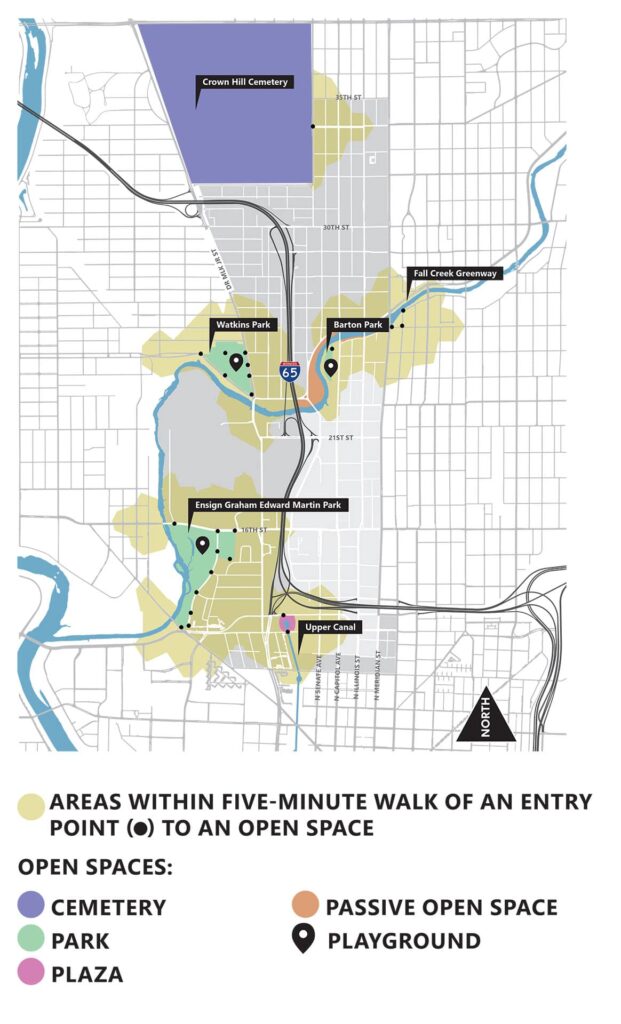
The five-minute walkability network analysis reinforces the need for more open green space in the Indy Health District that can serve not only the residents, but also employees, patients, and visitors.
ACCESS TO HEALTHY FOOD
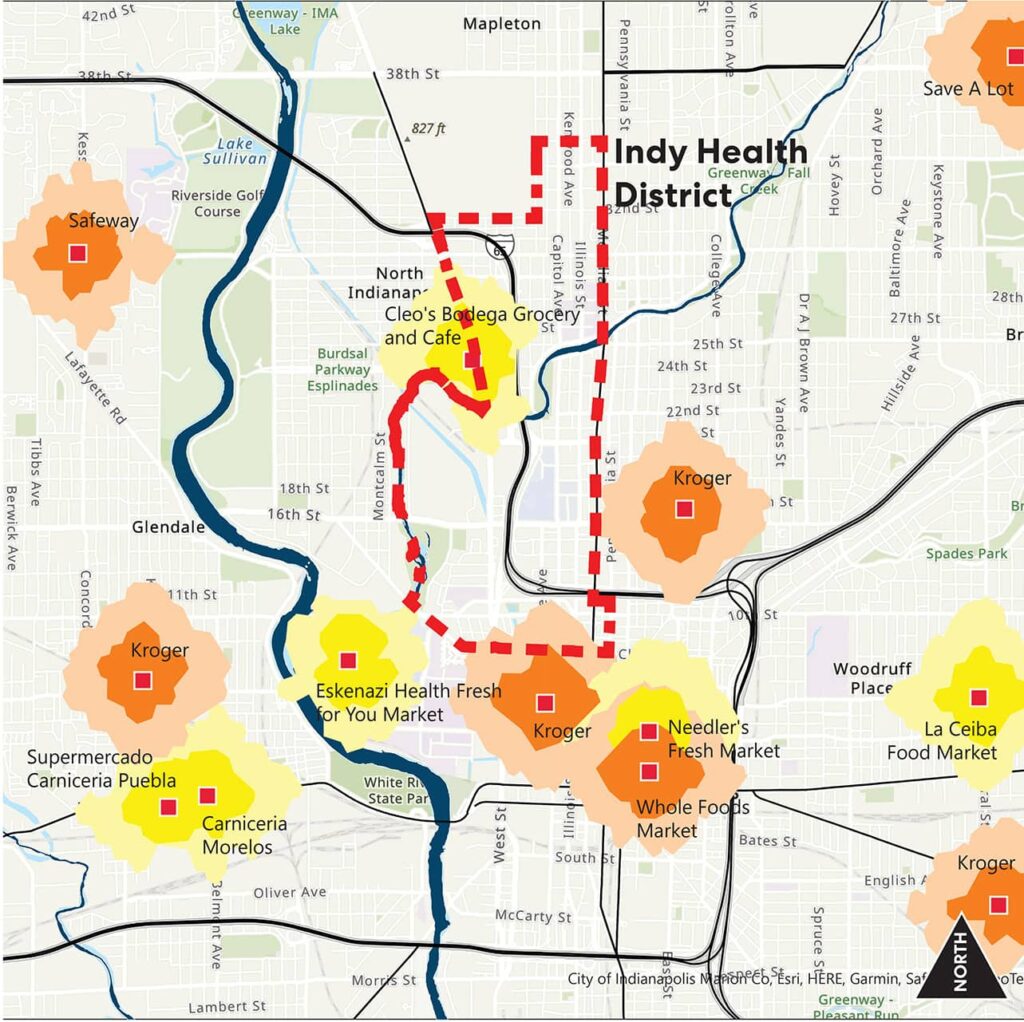
A majority of the communities in and around the Indy Health District lack access to healthy, affordable food. This may be due to a combination of distant grocery stores and an imbalance of healthy food options.
PEDESTRIAN ACTIVITY
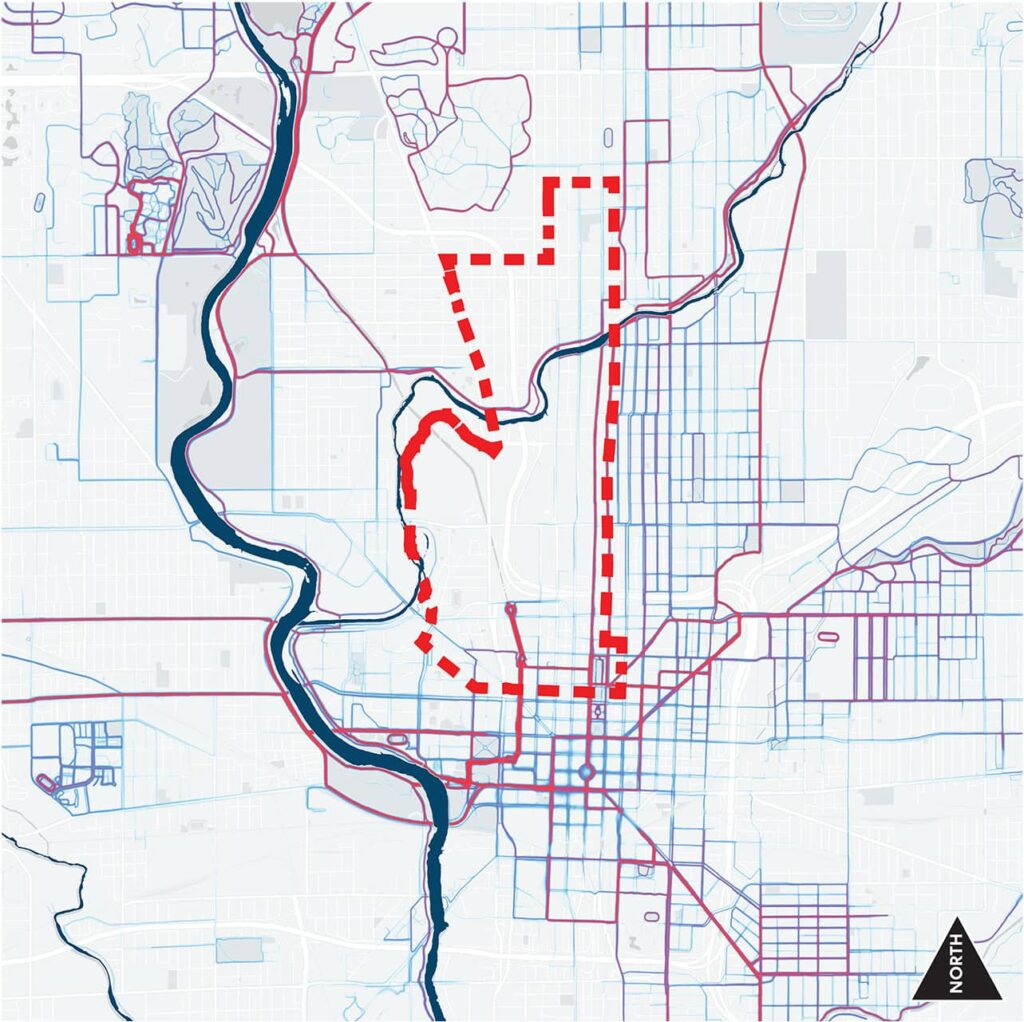
The district currently lacks the intensity of pedestrian activity seen in downtown Indianapolis and in neighborhoods to the east of Meridian Street.
BICYCLIST ACTIVITY
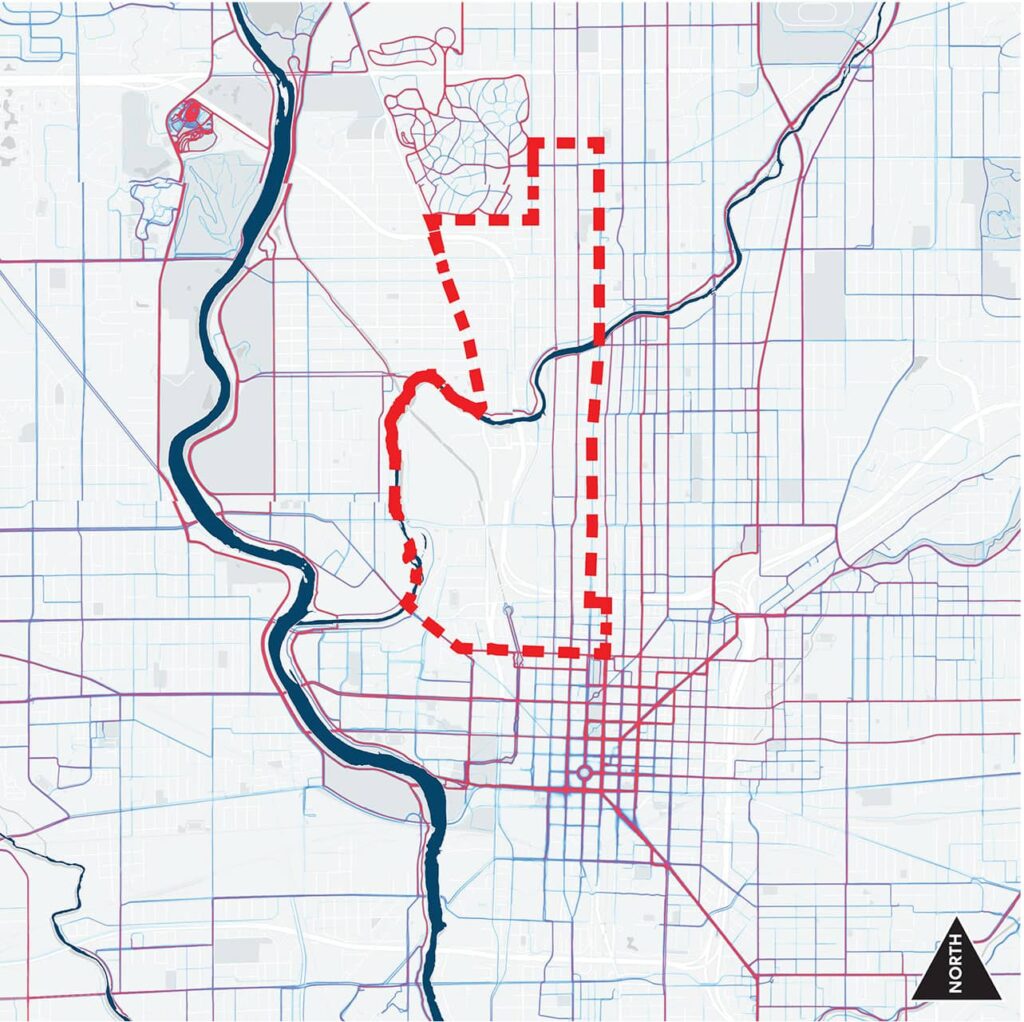
Heatmaps of bicyclist activity indicate use of existing bike lanes on N Illinois St and N Capitol Ave, and the Fall Creek Greenway exclusively. (Source: Strava.com) Lack of bicycle activity on other district streets suggests that bicyclists mostly pass through the district between downtown Indianapolis and surrounding neighborhoods.
District Healing Framework
In addition to identifying near-term projects to improve the district, the Indy Health District is also building a long-term vision that identifies future improvements to public infrastructure. These efforts could include comprehensive cleanup and restoration, reconfigured intersections and thoroughfares, as well as major public art installations. The maps below highlight several of the potential areas of improvement that the district could target.
Healthy Landscape Framework
Potential Long-Term Opportunities:
- Fall Creek cleanup and ecological restoration
- Fall Creek Greenway activation / enhanced access
- District Signature Park with art and activation
- Improvements to existing parks
- New neighborhood parks with program spaces
- Pocket parks
Healthy Land Use Framework
Potential Long-Term Opportunities:
- Establish development guidelines for two types of transitional zones where the character of new development bridges between traditional neighborhoods and institutional campuses:
- High-Density Mixed-Use
- Neighborhood Mixed-Use
Healthy Circulation Framework
Potential Long-Term Opportunities:
- Pedestrian amenities and bike lanes on key neighborhood connectors
- Capital Avenue Greenway with street trees, public spaces and bike lanes
- Illinois Street and Indiana Avenue landscaped as tree-lined, civic boulevards
- Reconfiguration of the MLK Jr St, 11th and 10th street intersections to provide pedestrian safety and traffic calming in alignment with the Rethink Coalition’s efforts surrounding I-65/I-70
- Canal Tow Path Trail Implementation
Arts and Culture Framework
Potential Priorities:
- Art that highlights the depth of history in the area
- Gateway monuments defining the geography and personality of the district
- Art that also performs design functions such as shade structures, crosswalks, building facades, and water access
- Minority-owned business enterprise entrepreneur support: Creative contractors as economic drivers
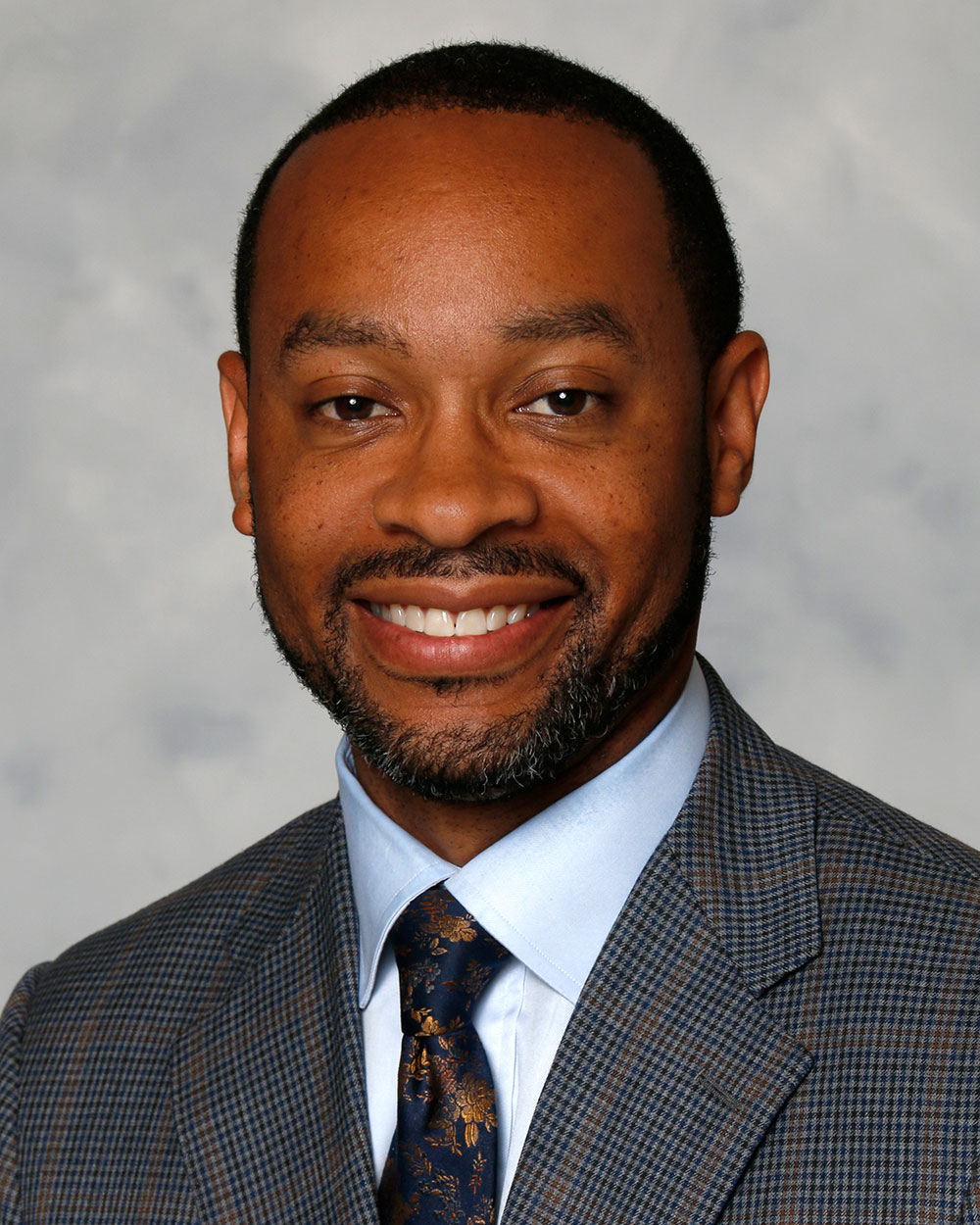
Jamal Smith
Indy Health District, Inc. Executive Director
Jamal L. Smith is a visionary leader in healthcare, community development, and social impact, currently serving as the Executive Director of Government Affairs & Strategic Partnerships at Indiana University Health (IU Health). Jamal is the driving force behind the Indy Health District, a transformative 1,500+ acre innovation district that is one of the largest in the United States. His leadership has galvanized major institutions—including IU Health, Citizens Energy Group, The Indianapolis Children’s Museum and Ivy Tech Community College – leading to more than $500 million of investment into the district. The District’s total economic impact is expected to surpass $1 billion, and it serves as a blueprint for how strategic partnerships can address social determinants of health and revitalize historically underserved communities.
Jamal’s career spans over 20 years of impactful leadership in government affairs, strategic community engagement, and business development. Prior to joining IU Health, he served as Executive Director of the Indiana Civil Rights Commission and Senior Advisor to Governor Mitch Daniels, where he championed statewide civil rights initiatives. He is also the founder of The Lead Change Project, a nonprofit organization that partners with urban schools and districts to engage youth through sports and extracurricular activities, creating pathways to lifelong success.
Jamal has managed multi-million-dollar budgets, established a $100 million Community Impact Investment Fund, and led international projects, including the selection and announcement of the 2008 Olympic Synchronized Swimming Team. His community leadership is equally impressive: he serves on the boards of the Indiana Sports Corp, Beyond Monumental (Indianapolis Marathon), Crossroads of America (Boy Scouts of America), and the Near North Development Corporation. Jamal was appointed by the Mayor of Indianapolis to Co-Chair the Your Life Matters Taskforce and has received numerous accolades, including the Reverend Charles Williams Award for Outstanding Service to Youth and the Sagamore of the Wabash, one of Indiana’s highest honors.
Jamal holds a Bachelor’s degree in History from Wright State University and an MS in Sports Management & Athletic Administration from Purdue University. His expertise and dedication to community advancement continue to make a profound impact on Indiana and beyond.
